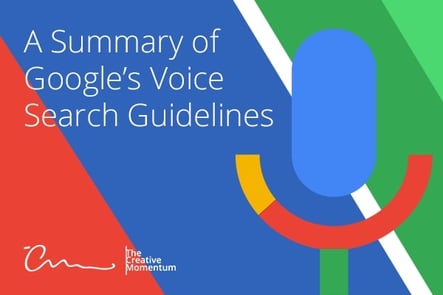
Voice-enabled products have created a huge buzz in 2018. Earlier this month, Kohler announced a voice controlled toilet seat at CES 2018. The toilet seat will come with either Alexa, Siri, or Google Assistant. We also saw an Alexa-enabled mirror and kitchen gadgets that come with Google Assistant pre-installed. As more devices begin utilizing Alexa & Google Assistant, we can assume that voice search will eventually become the norm. During the Christmas season, Amazon sold “tens of millions” of Echo devices. As marketers, we need to understand how users are interacting with these devices. To help us out, Google released a full document entailing the guidelines to voice search.
The 3 Dimensions of Google’s Voice Search
Google hired testers to rate voice search results. The testers were to follow a 200-page guideline on how to rate voice search results. The key parameters to rating voice search are:
Information Satisfaction
Does the content of the answer meet the needs of the user’s search query? For example:
Query: how tall was charles darwin?
Google Assistant Response: Charles Darwin stood about 5 feet, 11.5 inches tall.
This is a good example of a Google Assistant answer that fully meets the user’s query.
Here is an example of how Google Assistant slightly meets the searcher’s query:
Query: who is the president of the united states?
Google Assistant Response: According to example.com, the President of the United States is the elected head of state of the United States.
Most users issuing this query want to know the name of the current president, not the definition of the office. This response would be helpful for few users.
Length of Answer
When performing a traditional desktop or mobile search on Google.com, you can scan the SERPs or a page for lengthy answers. Because Google is moving towards eyes-free search, this is not possible. So it is important to provide just the right amount of content to satisfy the user’s query.
Proper Formulation & Pronunciation
It is much easier to use context clues to make sense of a badly formulated written answer than an ungrammatical spoken answer. It is important that Google Assistant’s response should be free of grammatical errors.
It is equally important that the response is communicated back with clear pronunciation and articulation.
How to Optimize for Voice Search?
Now that we have Google’s guideline to their voice search algorithm, how does it affect our content strategy? When strategizing your content, stay focused on providing information that will fully satisfy your user’s queries. While information satisfaction is important, it is also important to remember that you’re targeting voice searchers. That typically means that they are not looking for a lengthy answer. Keep your answer short, simple, and to the point. And last, make sure your content is written in a manner that can be easily read and understood.
If you’re looking for an SEO or content strategy that keeps the voice user in mind, contact The Creative Momentum to see if our strategies can help bring more traffic to your site.


